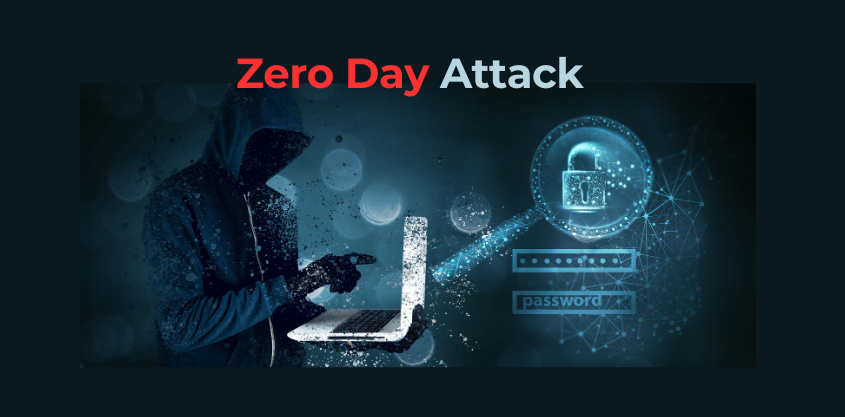To comprehend a zero-day attack, one must first grasp what the term “zero-day” means in the context of cybersecurity. “Zero-day” refers to a situation in which a vendor or developer of the software has only just discovered a flaw in their own software and has only “zero days” to fix it.
This phrase is commonly used in one of three ways:
Zero-day vulnerabilities: A software vulnerability that’s discovered by hackers before the vendor or the software developer is aware.
Zero-day exploits Technology that the hacker uses to attack the system through the zero-day vulnerability.
Zero-day attack: The actual strike to steal data, take control, or delve further into networks, devices, and systems.
Zero-Day Attack:
A zero-day attack is one in which the hacker successfully exploits the vulnerability before the vendor or software developers can find a fix for it.
Let’s take a look at the various forms that these zero-day vulnerabilities can take. There is a high chance that it will appear in any kind of wider software vulnerability. For instance, they could be missing data encryption, SQL injection, buffer overflows, missing authorizations, broken algorithms, URL redirects, bugs, or password security.
This makes it challenging to proactively find zero-day vulnerabilities, which in some ways is good news because it implies that hackers will struggle to find them. Yet, it also means that providing adequate protection against these attacks is challenging as well.
How to protect yourself against zero-day attacks:
It is crucial for individuals and companies to follow cybersecurity best practices in order to prevent zero-day attacks, protect their machines, and safeguard their data. This consists of the following:
Keep up-to-date:
It is important to keep all software and operating systems up-to-date. Vendors include security patches in the latest releases to mitigate vulnerabilities that have recently been identified in the software. Therefore, keeping up-to-date ensures your security.
Use Limited Apps:
Only use essential applications. More software means more vulnerabilities. By using only the applications you need, you can reduce network risk.
Install Web Application Firewall:
Installing a web application firewall (WAF) is one of the finest ways to take preemptive action. This device is responsible for monitoring and controlling the flow of incoming and outgoing network traffic.
Next-generation firewalls combine traditional firewall techniques like stateful inspection and packet filtering with other tools like Anti-virus, Deep packet inspection, Intrusion prevention, and Encrypted traffic inspection to ensure maximum protection against many threats.
Implement patch management policy:
Businesses must install a robust patch management policy in their network and process that align employees, IT, and security teams. Furthermore, whenever possible, patch management should be automated to avoid delaying a potential deployment or overlooking a vulnerable device.
Educate Device Users:
Within organizations, educate users. Many zero-day attacks prey on human error. Teaching employees and device users good online safety and security habits will prevent them from zero-day exploits and other digital threats.
Next-Gen Antivirus Solutions (NGAV):
While traditional antivirus software can detect malware, it’s not powerful to prevent it in zero days, at least until the vulnerability is disclosed and the vendor added the patch for it.
NGAV solutions can establish routine behavior and patterns of users and systems. These powerful tools and technologies can monitor and then detect abnormal behavior by establishing a baseline. Once a threat is found, the system automatically blocks the process or actions to prevent the threat from spreading elsewhere.
Though NGAV can’t stop all zero-day threats, it can lessen the overall attack surface and limit the severity of attacks.
Finding network vulnerabilities is a vital first step in combating cyberattacks, which is why CAD Gulf provides a free network health check service. For further information, email us at sales@cadgulf.com.
CADGulf Protects Against Zero-Day Threats
Zero-day is an ever-present and evolving threat. To safeguard yourself from this threat it is vital to implement the mitigation strategies and have a detailed incident response plan in place. Taking all these network preventive initiatives will reduce your attack surface, shorten the exposure window, and limit the potential damage a zero-day attack might cause.
If you need cybersecurity support, CAD Gulf’s Managed Security Services include zero-day antivirus installation, next-gen firewall configurations, vulnerability scans, and real-time intrusion detection and protection – all watched over by a Security Operations Center (SOC).
We are here to help you. If you require 24/7 monitoring, strategic IT consulting, or technical support, contact us today for a complimentary strategy session. We also provide a free network health check service. For further information, email us at sales@cadgulf.com.
Related Articles:
Zero Trust Network Access: What is it?
Network Security: How to secure your business network?
Learn how Secure SD-WAN increases fuel distribution network security
Top 3 Cybersecurity Threats for Governments
TOP 5 Data Center Migration Best Practices

